
From the 31 Aug 1796, when the Peak Forest Tramway and Upper Peak Forest Canal opened for trade, until the 1860s when mainline railways began to arrive in the High Peak, the tramway and canal was the only effective means of transporting limestone and lime. This was supplemented on the 6 June 1831 when the northern section of the Cromford and High Peak Railway opened between Hurdlow and the Peak Forest Canal at Whaley Bridge.
By the 1860s, mainline railways were having an impact on trade. The transhipment point between the Peak Forest Tramway and Canal was at Bugsworth Canal Basin, where a significant lime burning industry had become established over the years. Here, there was a steady decline in lime burning and the tramway was carrying less limestone. The decline in trade through Bugsworth Canal Basin can be attributed to the following key events:
The increasing use of mainline railway services for the transportation of limestone and lime from the quarries. For example, by 1870 the Midland Railway Co was building sidings alongside quarry faces at Dove Holes and they began to take freight, faster and at reduced rates, than was possible along the tramway and canal.
The expansion of the railway network provided a means of importing large quantities of coal into the quarries, which caused a strong revival of the lime-burning industry at the quarries. Lime burning had taken place around the quarries since the mid-17th century and maybe earlier. This early activity was possible because there were outcrops of local coal but this supply soon became exhausted as the Industrial Revolution progressed.
In 1891 there was a reorganisation of the limestone extraction industry in the High Peak when Buxton Lime Firms Co Ltd (BLF) was incorporated through an amalgamation of 13 quarry owners working 17 quarries. This greatly strengthened the position of the limestone extraction industry and in 1919 BLF was acquired by Brunner Mond & Co Ltd. In 1926 Brunner Mond merged with three other companies to form Imperial Chemical Industries Ltd (ICI).
The Peak Forest Tramway and Canal was originally owned by the Peak Forest Canal Co but on the 25 Mar 1846 this company was leased to the Sheffield, Ashton-under-Lyne and Manchester Railway Co, which merged with others on the 1 Jan 1847 to become the Manchester, Sheffield and Lincolnshire Railway Co (MS&LR Co). Subsequently, the MS&LR Co developed a commercial interest in the limestone extractive industry and it opened the New Line Quarry in the 1860s. By the 1890s, the MS&LR Co were transporting large quantities of limestone and lime by mainline railway and it must be emphasised that this could only have been done by carrying on a competitor's line by coming to some agreement. Thus, the MS&LR Co was increasingly by-passing the Peak Forest Canal and Tramway, which it owned.
By 1891, BLF, MS&LR Co, Samuel Bibbington, Gaskell, Deacon & Co and Newton, Chambers & Co were all operating limestone quarries around Dove Holes in the High Peak. The latter company needed limestone for use as a flux in its blast furnaces but the location of its quarry is uncertain. In 1905, S Taylor, Frith & Co Ltd was incorporated to add to the list of limestone quarry owners. This company operated Holderness Quarries and Lime Works. Eventually, this company became the sole user of the Peak Forest Tramway and it is understood that in 1922 it carried the last gang of waggons of limestone from the quarries to Bugsworth Canal Basin.
On the 2 Aug 1863, ownership of the Peak Forest Canal Co passed to the MS&LR Co and on the 2 Aug 1883 the Peak Forest Canal Co was dissolved and the tramway and canal were vested in the MS&LR Co. On the 1 Aug 1897, the MS&LR Co changed its name to the Great Central Railway Co (GCR Co). On the 1 Jan 1923 the GCR Co merged with others to form the London and North Eastern Railway Co (LNER Co).
On the 25 Jul 1925, the LNER Co was granted a private Act of Parliament and a special clause in this Act allowed the company to legally abandon the Peak Forest Tramway. In the late 1920s, T W Ward Ltd, scrap merchants of Sheffield, dismantled the tramway. The scrap was then taken by boat to Prince's Dock on the Ashton Canal and from there it was taken by rail to Edgar Allen & Co Ltd, steel manufacturers of Sheffield, for melting down. Subsequently, the track bed of the Peak Forest Tramway was sold off in small parcels to an unknown number of landowners.
Please use the Scrollbar to scroll down the map of the limestone quarries in the High Peak.
Key to above map from Kelly's Trade Directory for 1891:
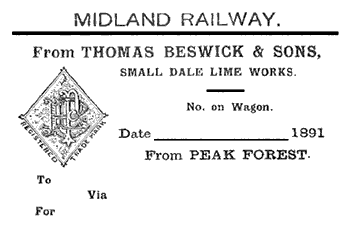
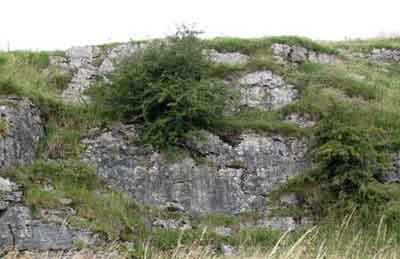
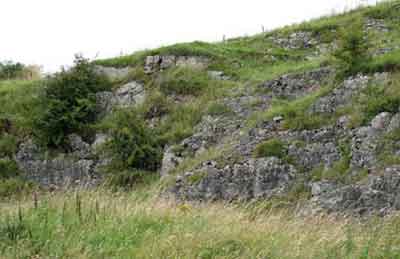
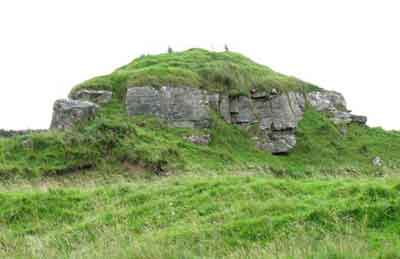
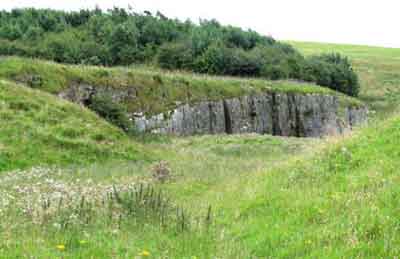
Bringing mainline railways into the High Peak was not without its engineering challenges, in particular the construction of Dove Holes and Cowburn Tunnels and the magnificent diverging viaduct across Black Brook Valley at Chapel Milton. Diverging from the south, the older viaduct (c.1867) curves to the west while the younger one (1890) curves to the east and both of them connect the line from the south to the line between Manchester and Sheffield. They are listed Grade II, List Entry No. 1187176.
Dove Holes Tunnel is 2,984-yards long and work on its construction commenced in 1860 and it took five years to complete. During construction the works experienced severe flooding and at one point an underground river was encountered. Six pumping stations were required to keep the workings clear of water.
Cowburn Tunnel is 3,702-yards long and it opened in 1891. An unusual feature of this tunnel is that it was not dug on a constant level and it has a summit, which is about a quarter way in from the eastern portal.